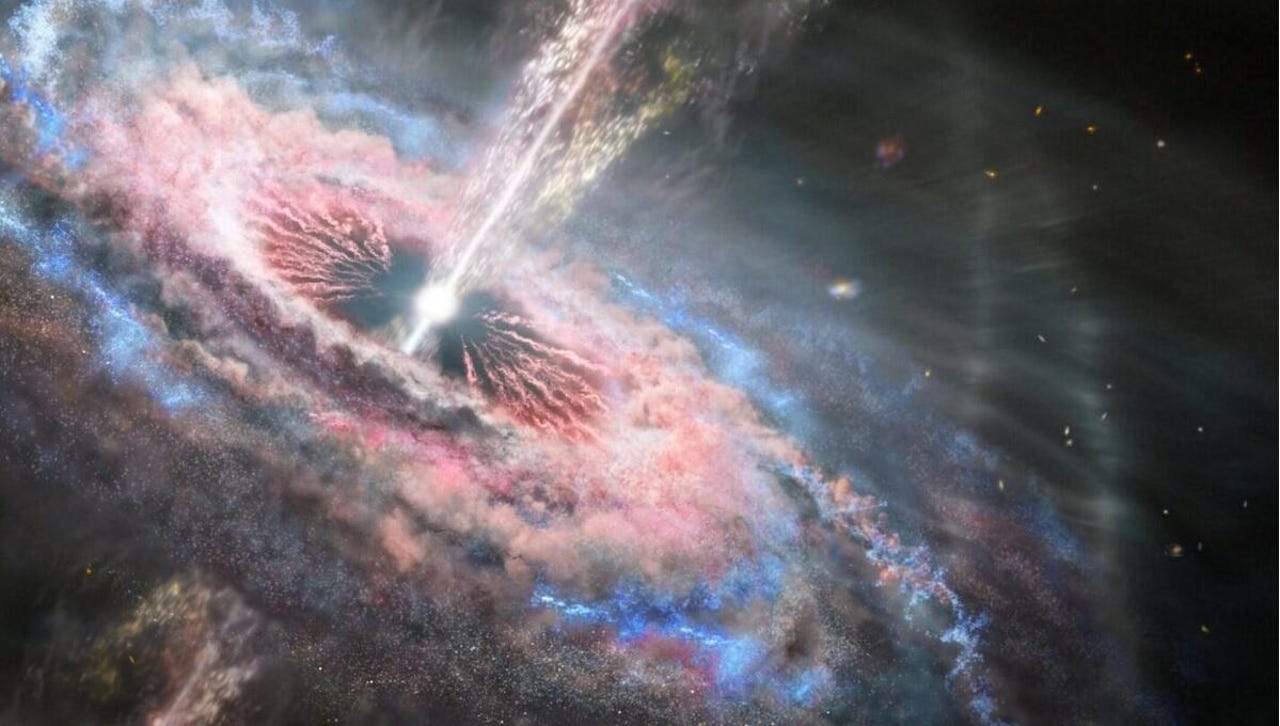
































This is an artist's concept of a galaxy with a brilliant quasar at its center. Using the James Webb Space Telescope, scientists will study six of the most distant and luminous quasars in the universe.
Image: NASA, ESA and J. Olmsted (STScI)NASA's James Webb Space Telescope (JWST) mission is set to release the first set of full-color images and spectroscopic data.
The images are from the farthest places in the universe that humanity as peered into: as NASA Administrator Bill Nelson told reporters last month, the Webb telescope was "nothing short of a real scientific feat."
ALSO SEE:On July 12, we'll see the universe like never before
Signaling how big a deal Webb's first images are, US President Joe Biden will release one of its first images in an event at the White House today (Monday) at 5 pm EDT. And NASA has detailed the list of cosmic objects that Webb targeted for these first observations.
These listed targets represent the first wave of full-color scientific images and spectra the observatory has gathered, and the official beginning of Webb's general science operations, NASA said.
Here's NASA's description of what the first images are of:
Webb was launched on an Ariane 5 rocket from Europe's Spaceport in Kourou, French Guiana on December 25, 2021. With a 6.5 meter primary mirror, it will serve as the main observatory for astronomers worldwide for the next decade. The mega telescope underwent a six-month period of preparation to align its complex mirror setup before it began science work.
Webb is operated by the Space Telescope Science Institute (STScI) in Baltimore, Maryland. NASA officials have boasted of the telescope's "audacious optical design", which consists of a "tennis court sized five-layer sunshield that attenuates heat from the Sun more than a million times," according to STSI.
The telescope has four cameras and spectrometers that can record extremely faint signals. The NIRSpec instrument has programmable microshutters, which enable observation up to 100 objects simultaneously. Webb features a cryocooler for cooling the mid-infrared detectors of the MIRI instrument to 7 Kelvin (.266 degrees Celsius/-447 degrees Fahrenheit).
The first images from Webb mark its official commencement of science operations. The astronomy team have already applied through a competitive process for time to use the telescope.
Webb's first year of science exploration is known as Cycle 1. Astronomers who are part of it join the Cycle 1 General Observers (GO) program, which offers 6,000 hours to observing programs. The programs cover exoplanets and disks, galaxies, solar system astronomy, supermassive black holes and more.
 Горячие метки:
3. Инновации
1. Космос
Горячие метки:
3. Инновации
1. Космос